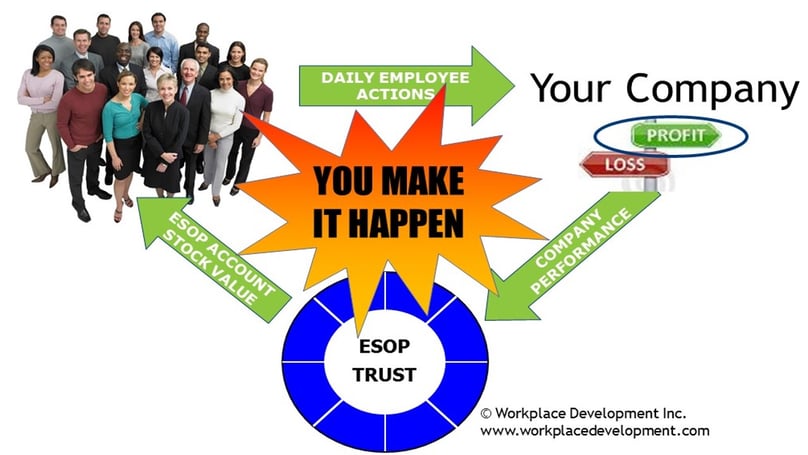Is sharing business information with employee owners dangerous? You bet. Because when you share it, employee owners:
- Learn the business’s strengths and weaknesses
- Raise questions and concerns
- May second-guess management decisions
- Can misinterpret the information and reach the wrong conclusion(s)
In addition to those challenges, the information could leak to your competitors, suppliers or customers.

Is it too dangerous to build a line of sight to performance?
Given those downsides, why would a company share business information with employee owners? In fact, maybe for those reasons, a 2012 survey by Robert Half found 76% of private-company CFOs do not share financial information with any employees (even management). Let’s consider what happens when a company fails to share business information. If that occurs, then:
- Employees don’t know the business’s strengths and weaknesses
- They still have questions and concerns
- They still second-guess decisions
- Running the business successfully is management’s problem
- Employees become apathetic and disengaged (“I get off at 5 pm”)
Even more troubling, because nature abhors a void, employees base their second-guesses on misinformation and the rumor mill. Rather than understanding what drives success, employees create their own measures of the business’s health (and their own job security). Those reduce or increase their anxiety on a random, unmanageable basis (e.g., how busy the office or warehouse is,
If you’re concerned that sharing business information will give competitors “insider” information about your company, consider in this age of information proliferation what you know about your competition. Most likely, your competition knows similar things about your firm. The number of "true" secrets in the era of instant communications and rampant social media is Facebook friendship small.
To start sharing business information that builds a line of sight to performance and reduces the problems associated with disengaged, uninformed employee owners, here are three practical tips you can implement:
- Secure the ESOP foundation
It’s difficult to focus people on how they drive business results if they don’t understand how their success connects to employee ownership. Secure the ESOP foundation by educating people about how your plan works (the TIONs: participaTION, contribuTION, allocaTION, distribuTION, valuaTION; and that
- Build the line of sight by starting small
The goal of sharing business information is to build a line of sight between employees’ daily performance, company success and ESOP stock value. This helps establish connections that enable employees to make the right choices and take positive action to improve the company. When you’re just starting, this can seem like a daunting task.
It takes time. Rather than share too much information or big numbers (e.g., millions of dollars), start small. Ask employees how much the company makes in profit on one revenue dollar and write down the answers. Then, via a gigantic dollar,
- Pick three to four big-picture targets to follow
Strengthen the line of sight by having management agree on three or four big picture targets that are critical to the firm’s success. These don’t have to be statement numbers. A distribution company, for example, can use successful ship rate. A call center might track average hold time. A manufacturing business can track scrap or defects, although it’s often better to focus on the positive, like successful production orders fulfilled, rather than the negative (defects).
Once you select the targets, talk about them as often as you can (at least on a quarterly basis). If you’re concerned about using actual numbers, share percentages. You can measure progress against plan, the previous year or some industry standard. People respond to images (the graphic is probably the best part of this article), so develop visual representations of the targets. You can
In the end, while there may be some downsides to sharing business information with employees, not doing so can backfire and have unintended consequences. But taking the time to build a line of sight by educating people about your ESOP can make all the difference. Start small and communicate a few, key targets. The potential results — improved performance, stronger culture and better employee retention — are worth the effort.
Written by Jim Bado, Workplace Development
